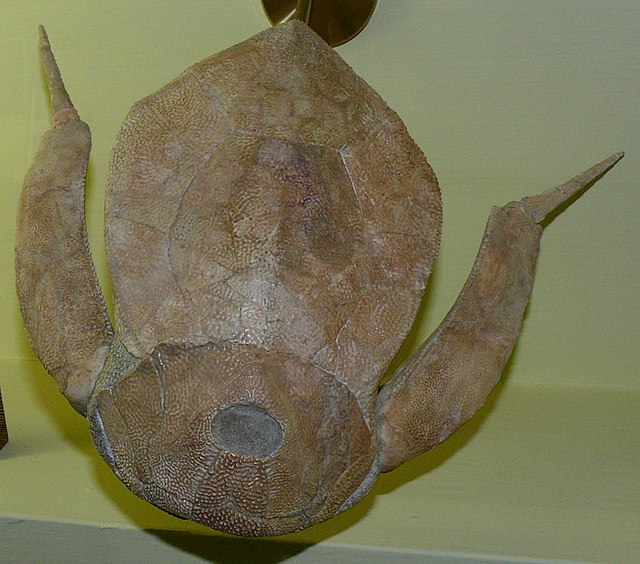Petalichthyida is an extinct order of small, flattened placoderm fish. They are typified by their splayed pectoral fins, exaggerated lateral spines, flattened bodies, and numerous tubercles that decorated all of the plates and scales of their armor. They reached a peak in diversity during the Early Devonian and were found throughout the world, particularly in Europe, North America, Asia, South America, and Australia. The petalichthids Lunaspis and Wijdeaspis are among the best known. The earliest and most primitive known petalichthyid is Diandongpetalichthys, which is from earliest Devonian-aged strata of Yunnan. The presence of Diandongpetalichthys, along with other primitive petalichthyids including Neopetalichthys and Quasipetalichthys, and more advanced petalichthyids, suggest that the order may have arisen in China, possibly during the late Silurian.
Petalichthyida
Placoderms are members of the class Placodermi, a group of prehistoric fish known from Paleozoic fossils which lived from the Silurian to the end of the Devonian period. While their endoskeletons are mainly cartilaginous, their head and thorax were covered by articulated armoured plates, and the rest of the body was scaled or naked depending on the species. Placoderms were among the first jawed fish; their jaws likely evolved from the first pair of gill arches.
Placoderm
Dunkleosteus, among the first of the vertebrate apex predators, was a giant armoured placoderm predator.
Amazichthys, a pelagic arthrodire from the Middle Famennian of the Late Devonian.
Fin spine of Eczematolepis, from the Middle Devonian of Wisconsin.





